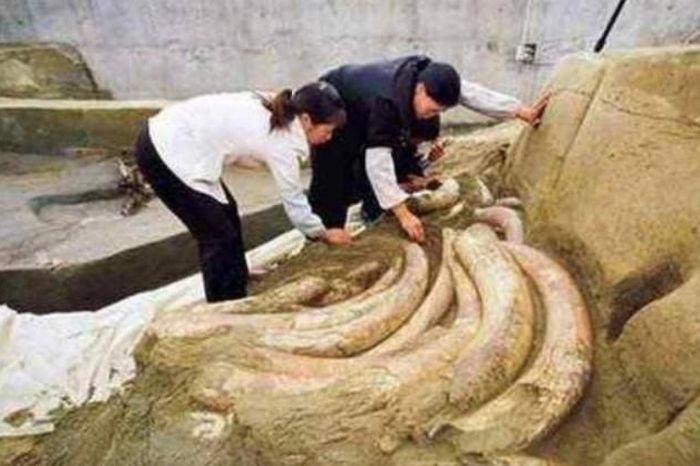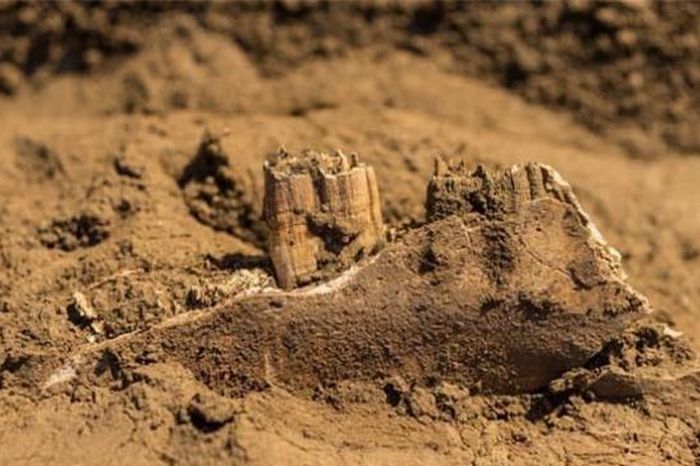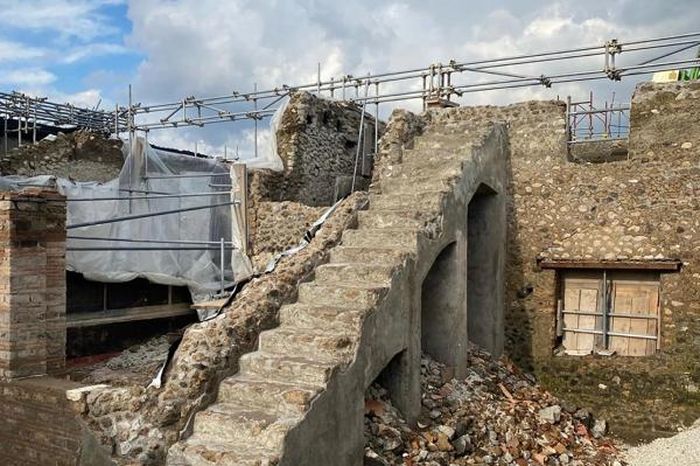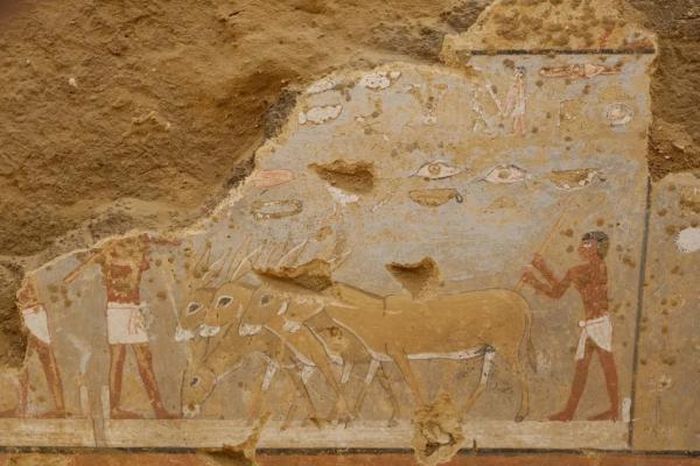72 villages were discovered on the seabed, and there are still traces of life. Is it possible that the seabed can really exist?
According to scientists' investigations, they discovered 72 ancient villages under the sea and these villages still retain traces of life.
Does this new discovery mean that the mystery of the seabed that we previously knew will be solved, and is there even a possibility that the seabed can actually become inhabited by humans? Can't help but create more questions. After decades of painstaking exploration, how will this groundbreaking discovery redefine our understanding of the underwater world? Who once lived in this mysterious underworld? What kind of culture and lifestyle do they have? And most importantly, why did they choose to live under the sea?

Without a doubt, this is a completely new exploration of underwater villages, traveling through time, space and the unknown. Let's enter this mysterious and fascinating underwater world together, and keep moving forward to uncover this secret from the depths of the sea!
The development of scientific archeology has revealed to us many mysteries about ancient civilizations, and an astonishing discovery recently confirmed that ancient humans once built villages at the bottom of the ocean. sea.
Decades ago, a diver accidentally discovered a stone structure on the ocean floor. This discovery aroused widespread concern in the scientific community and people began to understand the origin of the construction of this submarine. After a series of studies and investigations, scientists confirmed that this is an ancient village, the age of this village is far beyond our imagination.
Accumulating scientific evidence to confirm the historical value of this underwater village, scientists have conducted a lot of archaeological work. They found ancient relics, including pottery, fish hooks, fishing nets, etc., whose existence proves that the village was used for living and fishing. What's even more surprising is that scientists also found a number of ancient living tools and graves around the village, further confirming the length of time people existed here.
The reason ancient humans lived at the bottom of the sea. Scientists speculate that the reason ancient humans chose to build undersea villages may be related to the environment and resources at that time. The seabed provides rich marine biological resources, while terrestrial resources in this area may not be enough to meet human daily needs. At the same time, the seabed environment is relatively stable, which can provide a certain degree of protection and concealment, allowing people to stay away from hostile tribes or other threats.
The meaning and enlightenment of scientific archeology. This discovery has aroused deep thinking in the scientific community about the development of ancient human society and its adaptation to the environment. We used to think that humans always lived on land, but this discovery shows us that humans have learned to use and adapt to the marine environment. The discovery of this underwater village in the Stone Age has great significance in understanding the evolution of ancient human society, and it also provides us with a new way of thinking about limits. human adaptability.
Traces of life in underwater villages: Traces of human civilization suggest living activities
The remains of these underwater villages are testament to man's ability to master the ocean. The buildings and structures present in these villages demonstrate a precision of design and construction techniques that far exceeds what was previously recognized for ancient human technology. This shows that over a long history, humanity has begun to master the use of various natural forces in the ocean. People have gradually adapted and overcome the challenges of the marine environment by using marine resources to build houses. This discovery not only shows us the brilliance of human intelligence and technology, but also provides us with a new perspective on ancient human evolution.
Traces of life in underwater villages also shed light on human interactions with marine life. In these ruins, a large number of works of art and sculptures related to marine life were found. This suggests there may have been a special connection between ancient humans and marine life. Presumably, these ancient peoples learned more about each other through interactions with marine life and may even have had some form of cooperation and symbiosis. Such discoveries not only provide ideas for our study of ancient civilizations but can also help us better understand and protect the world's most precious biological resource - biology. marine animals.
Traces of life in underwater villages also shed light on our understanding of climate change and environmental impacts. These sea-centered villages are valuable geological records that can reveal changes in the earth's environment in ancient times. By studying the fossils, rocks and sediments preserved at these sites, we can reconstruct the evolution of ancient marine ecosystems. This is important for our understanding of changes in the ocean environment today and for our response to climate change.
Traces of life in underwater villages offer new perspectives on our own history. In the past, people always associated the development of human civilization with terrestrial culture, but now discoveries show that the ocean was once the cradle of human civilization. This has important implications for us to understand our own origins and history.
Despite the large population on Earth's surface, our knowledge of the subsurface marine environment has so far been limited. However, with the help of modern technology, we can finally keep an eye on this mysterious world.
In-depth research has revealed the inhabitants of the underwater village have many surprising characteristics. Their body structure is very similar to modern humans and has distinct features such as limbs and heads. This has led people to speculate that perhaps they are closely related to our common ancestor.
The social organization and culture of the inhabitants of underwater villages also show signs of similarity to modern humans. They have their own communities and families, maintaining social order. In addition, the various activities they perform, such as communication, cooperation, and resource sharing, are a familiar and welcome phenomenon.
However, residents of undersea villages face different environmental pressures and adaptive challenges than modern humans. They live in dark, high pressure and low temperature environments and must have special physical and psychological adaptations. With further research, we can see that they possess some unique physiological characteristics to adapt to this harsh environment.
Scientists still do not have conclusive evidence about whether the inhabitants of underwater villages were part of an ancient civilization. However, there are some indications that they may have connections to ancient civilizations that once existed on Earth's surface. For example, their architectural structures and artistic creations show surprising similarities with the works of several ancient civilizations. This has led some scientists to suspect that they may be descendants of the ruins of an ancient civilization.
To unravel the mystery of the underwater village, we still need to research and explore more. Scientists need to further study the ocean floor to find more evidence about its inhabitants. Only through broad interdisciplinary collaboration can we unravel this mysterious technique and understand how this undersea village may be part of an ancient civilization or related to humans. modern people.
The discovery of the inhabitants of the undersea village raises many questions for us and raises new questions about our understanding of the origin and evolution of life on Earth. The existence of civilization and intelligence is no longer limited to the surface, which will stimulate our endless curiosity about the unknown world. We look forward to continued research and exploration by scientists to help us unravel this mysterious mystery and gain a deeper understanding of the origins and significance of the inhabitants of the underwater village.
Regardless of whether these villages were actually inhabited or not, this discovery has given us much food for thought and inspiration. Perhaps this is just the tip of the iceberg, there are many more secrets in the underwater world waiting for us to discover. Whether we are scientists, explorers or ordinary people, we should keep an open mind and continue to work hard to explore the unknown. Only in this way can we better understand and appreciate the world and the meaning of coexistence between humans and nature.
You should read it
- The 7,500-year-old rock drill is found in the prehistoric village of Turkey's Bursa
- Strangely, the 100-year-old village has no mosquitoes, so far there is no explanation
- Archaeologists found traces of ancient villages in 5,500 BC in Switzerland
- Explore the rainbow-colored village of fever in Indonesia
- Ancient ancient embankment found in Aswan, Egypt
- The 'eccentricities' are only found in ancient Egypt
- Back in the past to find out how the ancient Romans went to the toilet
- How to Find a Village in Minecraft
May be interested
- Inserting traces into Word
 insert traces into word documents often appear with profile form documents, ...
insert traces into word documents often appear with profile form documents, ... - Stop expecting these 7 things in others
 i do not exist in this world to live with your expectations. and you don't appear in this life to live with my expectations - bruce.
i do not exist in this world to live with your expectations. and you don't appear in this life to live with my expectations - bruce. - China announced the digital map of Antarctic seabed 3D
 chinese scientists have just published a digital 3d terrain map on the antarctic seabed after collecting data on a recent expedition.
chinese scientists have just published a digital 3d terrain map on the antarctic seabed after collecting data on a recent expedition. - Isis Temple was discovered by builders in Banha
 traces of an ancient egyptian temple built for egyptian muslims, isis was discovered by construction workers in a housing project in the city of banha, the capital of qalyubiya governorate.
traces of an ancient egyptian temple built for egyptian muslims, isis was discovered by construction workers in a housing project in the city of banha, the capital of qalyubiya governorate. - Discovered 20 Earth-like planets that could contain life
 when analyzing the data from the kepler spacecraft, astronomers discovered that 20 new planets have suitable conditions for survival and development.
when analyzing the data from the kepler spacecraft, astronomers discovered that 20 new planets have suitable conditions for survival and development. - Close-up of the deepest living fish in the ocean ever recorded by camera
 this is the deepest living fish on the seabed ever recorded. university of western australia deep-sea scientist, professor alan jamieson, said that if this record is broken, it is likely that the depth will only increase by a few meters.
this is the deepest living fish on the seabed ever recorded. university of western australia deep-sea scientist, professor alan jamieson, said that if this record is broken, it is likely that the depth will only increase by a few meters. - Paleontologists discovered the fat on the body of the fish lizard 180 million years ago
 fat is something that always exists on an animal's body, but in fact they are very biodegradable and cannot exist in the form of fossils like bones, but recently paleontologists have recently found a trace. trace of fat on fossilized fish lizard in germany. this discovery will raise our awareness of fish lizards.
fat is something that always exists on an animal's body, but in fact they are very biodegradable and cannot exist in the form of fossils like bones, but recently paleontologists have recently found a trace. trace of fat on fossilized fish lizard in germany. this discovery will raise our awareness of fish lizards. - Close-up of fish walking on the seabed surprised many people
 a strange orange-like creature that looks like a fish moving on the seabed is like walking making the viewer stunned.
a strange orange-like creature that looks like a fish moving on the seabed is like walking making the viewer stunned. - Suddenly discovered life right in the core of the Earth
 this finding causes us to change our knowledge about life.
this finding causes us to change our knowledge about life. - Life when technology is not popular
 at 2:00 am, you spend the last hour and stand idly on the road in a strange city, how do you call a taxi to pick up to the hotel if the atm does not exist and the mobile phone has not appeared?
at 2:00 am, you spend the last hour and stand idly on the road in a strange city, how do you call a taxi to pick up to the hotel if the atm does not exist and the mobile phone has not appeared?










 Experts dug up the 'ivory bank', but they panicked and retreated halfway through the excavation. The truth lies in the ivory
Experts dug up the 'ivory bank', but they panicked and retreated halfway through the excavation. The truth lies in the ivory A woman's body was exhumed from a thousand-year-old blood coffin leaking thick black water, experts were shocked: Evacuate immediately
A woman's body was exhumed from a thousand-year-old blood coffin leaking thick black water, experts were shocked: Evacuate immediately Modern science and technology are advanced, why don't you dare dig up Qin Shi Huang's mausoleum? 4 mysteries were discovered that shocked experts
Modern science and technology are advanced, why don't you dare dig up Qin Shi Huang's mausoleum? 4 mysteries were discovered that shocked experts Ancient Roman ruins reveal many secrets
Ancient Roman ruins reveal many secrets 4,300 year old color painting in an ancient Egyptian tomb
4,300 year old color painting in an ancient Egyptian tomb The underground world was accidentally discovered by people when pumping out the water. Experts here call it the 9th wonder of Earth.
The underground world was accidentally discovered by people when pumping out the water. Experts here call it the 9th wonder of Earth.